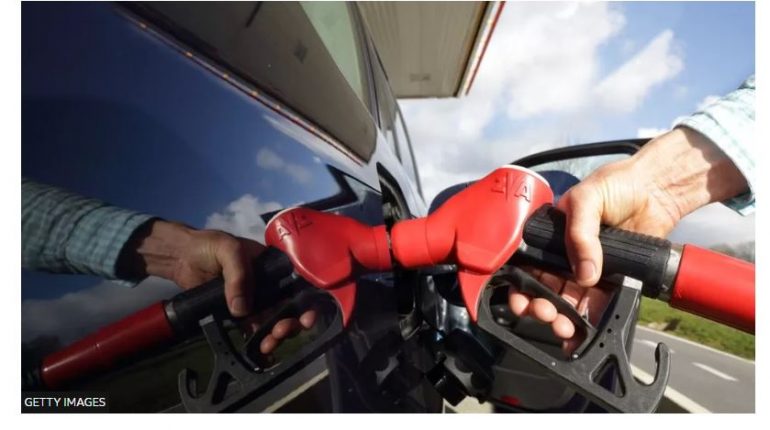
Petrol prices dropping too slowly
There is evidence that “rocket and feather” fuel pricing happened in 2022, a competition watchdog has said.
This is when fuel prices rise as wholesale costs rise, but then fall more slowly than costs come down.
The Competition and Markets Authority (CMA) said it would look into whether this drove greater profits for retailers.
The RAC said this was a widespread problem and Christmas fuel prices were more expensive than they should be.
The CMA found evidence of rocket and feather pricing across all retailers in March and April 2022, in particular for diesel prices, the watchdog said in a report.
Petrol prices: What is fuel duty and is it going up?
However, motoring organisation the RAC said there was “clear evidence of it happening this time last year and in 2018 and 2019”.
“When wholesale prices trend down for weeks at a time drivers should see pump prices do the same at a similar rate – unfortunately our data shows that this is not often the case,” said RAC fuel spokesman Simon Williams.
“What’s happening now – as it was last December – is a massive downward shift in the price of wholesale fuel with a slow dropping of forecourt prices. Consequently, drivers are set for a more expensive time on the roads this Christmas than it should be,” he added.
Wholesale diesel has “plummeted” 33p since the beginning of October, but pump prices have only fallen 8.4p, he said.
Meanwhile, the wholesale price of petrol has fallen from 130p a litre to 109p – a drop of 21p, he said. But the average price of unleaded petrol has only fallen 8p.
“We strongly urge the biggest retailers to lower their prices. Unfortunately, we fear they are holding out, hoping for a rise in the price of oil later this month,” Mr Williams added.
The price of fuel has jumped due to factors including Russia’s invasion of Ukraine, which has pushed up the price of diesel more, the CMA said. Most diesel in north-west Europe has historically come from Russia.
Refineries have been charging more for wholesale fuel relative to the cost of crude oil, and the pound has been weaker against the dollar, which has also pushed up prices.
Crude oil is priced in dollars, so a weaker pound makes it relatively more expensive to buy in the UK.
Rural premium
Meanwhile, people in rural areas, who tend to be much more reliant on cars, are paying more for petrol and diesel compared to those living in towns, adding to cost of living pressures, the CMA said.
Fuel is on average 1.2p per litre more expensive in rural places, it said.
However, rural petrol stations face higher costs due to selling less fuel than urban forecourts and higher transportation costs.
Also, the higher prices may allow rural petrol stations to stay afloat in sparsely populated areas – if they closed, that would be a concern to local drivers, the CMA added.
Depending on where people buy their fuel, there could be about a 4p per litre difference in cost between local petrol stations, in both towns and the countryside.
In general, the highest priced forecourts have fewer competitors, raising some competition concerns.

